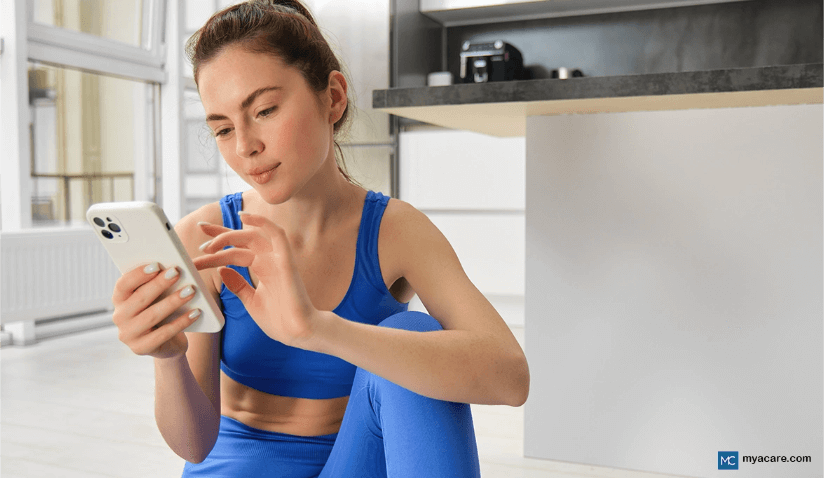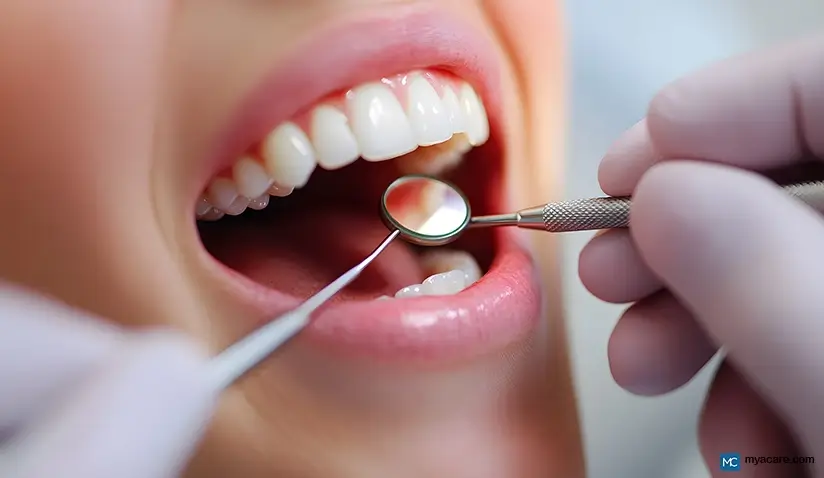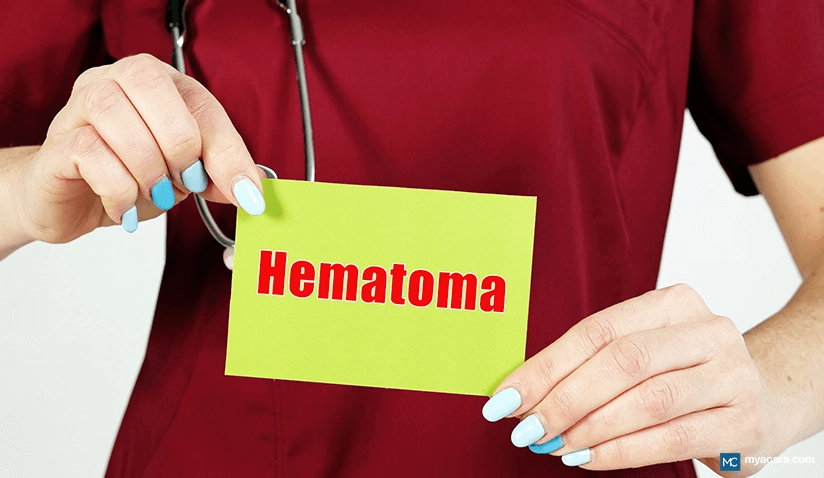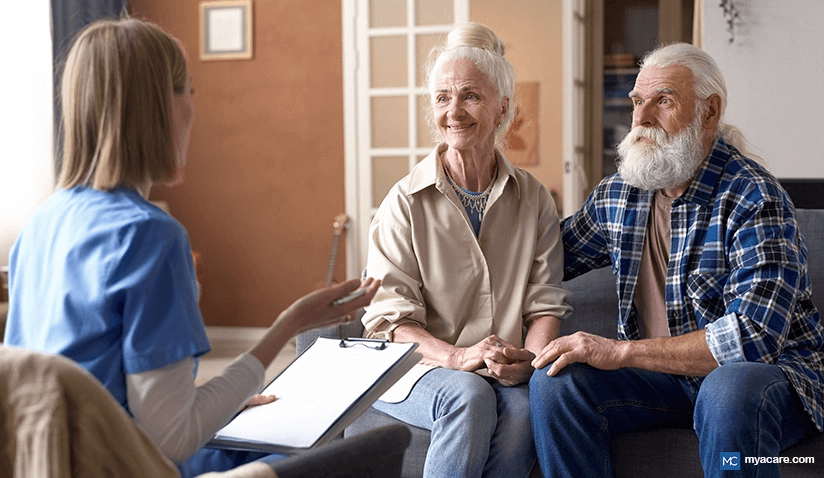Analyzing Health and Wellness Social Media Trends From 2024

Medically Reviewed by Dr. Sony Sherpa, (MBBS)
In recent years, social media has become a powerful platform for shaping health and wellness trends. Platforms such as Instagram and TikTok have ignited global conversations on critical issues like mental health and fitness, fueled by viral trends and the influence of wellness gurus. While these trends provide valuable opportunities for individuals to explore self-care practices and prioritize their well-being, the abundance of information available online can be daunting and may not always be accurate or reliable.
Given their widespread popularity, it is essential to approach these trends with a critical and discerning eye. Not all wellness practices that gain traction on social media are supported by scientific evidence, and some may even pose risks to health if not properly understood or executed. Critical thinking is key in navigating this digital age of wellness and consulting with healthcare professionals should always be part of the process when considering any new health trend. This empowers individuals to make informed healthcare decisions tailored to their specific needs and based on up-to-date medical evidence.
8 Health-related Social Media Trends
1. Shadow Work
Shadow work, a concept popularized by Swiss psychiatrist Carl Jung, refers to the practice of engaging with the unconscious parts of the self. According to Jungian psychology, every individual has a "shadow"—the aspects of the self that are hidden, repressed, or denied. These can be negative feelings or traits, unresolved traumas, or even positive qualities that we fail to express. Shadow work entails a conscious exploration and integration of these hidden traits, which can influence our behaviors and decision-making processes in ways we do not fully understand.
Benefits:
- Increased Self-Awareness: Engaging in shadow work allows people to better understand their unconscious motivations, habits, and emotions. By identifying what lies beneath the surface, people can make more conscious, informed choices in their personal and professional lives.
- Self-Compassion: Shadow work fosters a sense of self-acceptance by encouraging people to embrace all aspects of themselves, including the parts they may have previously rejected or ignored. This process of self-compassion often leads to healing from past emotional wounds.
- Personal Growth: By confronting the darker aspects of the self, people often experience personal transformation. Shadow work encourages people to let go of limiting beliefs and behaviors, paving the way for greater emotional and spiritual growth.
- Enhanced Emotional Intelligence: The deeper emotional understanding gained from shadow work leads to greater empathy and emotional intelligence, improving relationships and overall mental well-being.
Cons:
- Emotional Challenges: Shadow work can be emotionally intense, as it often requires confronting our darker side, painful memories, unresolved trauma, or repressed emotions. This process can be uncomfortable, triggering, and emotionally draining, particularly for those who have experienced significant psychological distress.
- Needs Professional Guidance: For those struggling with mental health challenges or deep trauma, shadow work should be approached with caution. It is often advisable to engage in shadow work with the help of a trained therapist to ensure that it is done safely and effectively.
Practical Tips:
- Journaling: Writing down thoughts, feelings, and experiences can help to uncover hidden aspects of the self. By asking reflective questions such as "What do I dislike most about myself?" or "What triggers strong emotional reactions in me?" people can begin to explore their shadow side.
- Meditation: Meditation techniques, such as mindfulness or guided visualizations, can help people access deeper layers of consciousness and bring the unconscious to the surface.
- Therapy: Engaging in therapy, particularly modalities like psychodynamic therapy or Jungian analysis, can provide a safe space for exploring shadow work with a professional guide. By working with a therapist, people can find help with navigating difficult emotions and ensure that the process is done in a supportive and constructive manner.
2. Bed Rotting
The "bed rotting" trend has recently gained traction on social media, referring to the practice of indulging in extended periods of time in bed, often as a form of self-care or relaxation. For some, bed rotting serves as an attempt to recuperate from burnout or emotional exhaustion. This trend has become particularly popular during periods of intense academic pressure or after experiencing emotional distress. While taking time to rest and recharge is important for mental health, this trend has sparked debates about its potential negative consequences.
Benefits:
- Rest and Relaxation: Bed rotting allows people to disconnect from the stresses of daily life and recuperate physically and emotionally. By taking time off to rest in bed, people may reduce their anxiety and give their minds space to unwind.
- Psychological Reprieve: For those experiencing burnout or overwhelming emotional distress, spending time in bed can feel like a temporary escape. It can offer a break from responsibilities, social pressures, and the demands of daily life.
Cons:
- Physical Health Impacts: While short periods of rest are beneficial, prolonged inactivity can have negative impacts on physical health. Excessive bed rest may lead to muscle weakness, poor circulation, and sleep disturbances, which can further complicate mental health issues.
- Social Isolation: Bed rotting side effects include social withdrawal, leading individuals to avoid interactions with friends, family, and colleagues. Due to the loss of social connections and the amplified feelings of loneliness and detachment that can be precipitated by bed rotting, depression and anxiety are significantly more likely to develop.
- Psychological Implications: When bed rotting becomes a habitual response to emotional or practical challenges, it can hinder the development of effective coping mechanisms and potentially prolong emotional distress.
Practical Tips:
- Balance Rest and Activity: While rest is important, it is essential to incorporate some level of physical activity throughout the day. Going for a walk, stretching, or engaging in light exercise can help counteract the negative effects of prolonged inactivity.
- Practice Mindful Rest: With bed rotting, there can be a tendency to spend considerable time scrolling through negative social media content, i.e., doomscrolling. Instead, try to incorporate mindfulness techniques by engaging in activities such as reading, journaling, or guided meditation that promote mental clarity and relaxation without fostering avoidance.
3. Cute Aggression
Cute aggression refers to the urge to express affection toward something cute, often through exaggerated actions like squeezing, biting, or shouting, in response to overwhelming cuteness. This phenomenon has been observed when people encounter adorable animals, babies, or even cute inanimate objects. It may seem contradictory—how can aggression be linked to positive emotions like love and joy? Researchers suggest that cute aggression is a "dimorphous" expression of positive feelings, where the intensity of the emotional response is so overwhelming that it manifests as a form of aggression.
Neurobiology of Cute Aggression:
- Dopamine and Oxytocin: These neurotransmitters are crucial for emotional responses. Dopamine is often linked to feelings of pleasure and reward, while oxytocin is associated with bonding and affection. Together, they contribute to the intense emotional experience that drives cute aggression.
- Vasopressin and Serotonin: These hormones are involved in regulating emotions and stress responses, and research suggests that they may also play a role in cute aggression.
Potential Benefits:
- Stress Reduction: Engaging in expressions of cute aggression may help release pent-up emotional energy, leading to a sense of relief and relaxation. This may be one reason why people feel better after experiencing overwhelming cuteness.
- Mood Boosting: The surge of positive emotions triggered by cute aggression can lead to improved mood and feelings of joy, which are associated with the release of feel-good neurotransmitters.
Cons:
- In extreme cases, cute aggression could escalate, leading to harmful behavior. However, most instances of cute aggression are harmless and are simply a way to release emotional intensity.
Practical Tips:
- Embrace the positive aspects of cute aggression by acknowledging the feelings it evokes without acting on aggressive impulses. Redirect this energy into more constructive expressions, such as laughter or affection, to experience the benefits without harm.
4. Hot Girl Walk
The Hot Girl Walk is a fitness trend that encourages women to focus on self-care, body positivity, and empowerment through walking. This walking routine has gone viral on social media, with people sharing their experiences of walking in nature, listening to uplifting music, and repeating positive affirmations. The trend promotes confidence, encourages movement, and creates space for positive self-talk.
Benefits:
- Reduced Stress: Walking is known to be an effective way to manage stress. By engaging in regular walks, people can clear their minds, reduce tension, and improve their overall mood.
- Improved Mood and Self-Esteem: The combination of physical activity and positive affirmations can help improve self-esteem and foster a sense of accomplishment. The emphasis on body positivity and self-love is central to the Hot Girl Walk's appeal.
- Promotes Mental Clarity: The time spent walking in nature or listening to empowering music creates a meditative space for self-reflection, allowing people to clear their mental clutter and focus on their goals.
Cons:
- If not approached mindfully, the Hot Girl Walk could lead to body image issues or unhealthy comparisons, particularly when influenced by the idealized portrayals of others on social media.
Practical Tips:
- Incorporate positive affirmations into your walk to cultivate self-love and confidence. Focus on your body’s strength rather than appearance, appreciating what it can do for you rather than how it looks.
- Walk with intention, using this time as a mental health break to relieve stress and promote a positive mindset.
5. Lucky Girl Syndrome
Lucky Girl Syndrome is a viral social media trend that involves affirming to oneself that good things will happen because one is "lucky." Manifestation and positive thinking are central to this trend, and people often repeat affirmations like "I am lucky" to attract positive outcomes into their lives. This practice is rooted in the belief that thinking positively can manifest good fortune.
Benefits:
- Improved Mental Health: Positive thinking can boost overall mental well-being by reducing stress and promoting an optimistic outlook on life.
- Increased Motivation: Focusing on the idea that good things are possible helps people remain motivated to pursue their goals.
Cons:
- Excessive optimism can lead to unrealistic expectations, setting people up for disappointment if outcomes do not meet their hopeful affirmations.
Practical Tips:
- Encourage a balance between optimism and realistic expectations. Positive thinking is valuable, but it should be grounded in reality, and outcomes should not be entirely dependent on external factors.
6. Self-Diagnosis
Self-diagnosis, the process of diagnosing one’s own medical or psychological condition based on symptoms gathered through online resources, has surged in popularity, especially among younger audiences. With mental health awareness at the forefront of social media discussions, platforms like TikTok and Instagram have seen a rise in people self-identifying with various mental health conditions after watching or reading content related to symptoms. From borderline personality disorder to anxiety disorders, people use online articles, videos, and peer experiences to make sense of their own emotions and behaviors.
While the availability of information on mental health can help to de-stigmatize these issues, it can also be dangerous when users fall into the trap of confirmation bias—seeking out information that aligns with their preconceptions or self-perceived symptoms. A study exploring why teens self-diagnose highlights that the tendency to validate one’s experiences through content on social media can create a cycle of misdiagnosis and mental health misconceptions.
Benefits:
- Increased Awareness: One positive aspect of self-diagnosis is the increase in awareness about mental health conditions. When people are exposed to symptoms of mental illnesses through media, they may become more mindful of their own well-being and the need to seek professional help.
- Empowerment: The ability to identify potential conditions and take proactive steps, such as seeking help or making lifestyle changes, can provide a sense of control and empowerment over one’s health.
Cons:
- Misdiagnosis and Harmful Self-Treatment: Without proper professional guidance, self-diagnosis can lead to inaccurate conclusions about one’s mental health. Misdiagnoses can result in unnecessary worry, delayed treatment, and harmful self-treatment. For example, treating symptoms of anxiety as a simple case of stress without a comprehensive evaluation may overlook underlying conditions like bipolar disorder or obsessive-compulsive disorder (OCD).
- Confirmation Bias: Social media content often highlights personal stories and experiences that may not necessarily apply universally, leading people to believe they have the same conditions. This can lead to self-fulfilling prophecies or incorrect assumptions about their mental health, especially with complex conditions like major depressive disorder or borderline personality disorder.
- Delayed Professional Diagnosis: Relying on self-diagnosis may prevent people from seeking professional medical advice. This can result in delays in obtaining an accurate diagnosis, where the true cause of symptoms is missed, and treatments may be ineffective.
Practical Tips:
- Seek Professional Help: If you suspect you have a mental health condition, it is important to consult with a licensed mental health professional who can provide a comprehensive evaluation based on clinical criteria. They can guide you toward an accurate diagnosis and appropriate treatment.
- Use Information Responsibly: While online resources can increase awareness, they should not replace a formal diagnosis. Be cautious of drawing conclusions based solely on symptoms that may not fully align with your experiences.
- Self-Care and Awareness: Incorporating self-care practices, such as journaling, mindfulness, or speaking with trusted friends and family, can help people manage mental health symptoms while waiting for a professional assessment.
7. Dopamine Dressing and Dopamine Decor
Dopamine dressing and dopamine decor have emerged as trends that focus on enhancing mood through color and aesthetics. The concept behind these trends is rooted in the idea that certain colors and patterns can trigger the release of dopamine, the brain’s "feel-good" neurotransmitter. Dopamine is associated with motivation, pleasure, and reward and is thought to be influenced by the environment we create, including how we dress and the spaces we inhabit.
- Dopamine Dressing refers to wearing clothes that incorporate bold, vibrant colors, patterns, or textures to uplift mood and energy. This trend encourages people to choose outfits that make them feel happy and confident, particularly through the use of bright shades like yellow, pink, and neon green.
- Dopamine Decor takes a similar approach, suggesting the use of vibrant colors and engaging design elements in home interiors. Brightly colored walls, fun accessories, and energetic patterns are meant to create spaces that inspire positivity and creativity.
Science Behind the Trends:
Color psychology plays a significant role in understanding how different hues influence mood. Studies have shown that colors like yellow (associated with optimism) or blue (linked to calmness) can affect emotions. Additionally, aesthetics, such as the arrangement of furniture and the inclusion of visual focal points, contribute to creating a stimulating or soothing environment.
- Neurobiological Impact: When people surround themselves with colors and patterns they find visually appealing, dopamine release may occur, reinforcing the positive feelings they experience when engaging with these elements. The concept of "reward" through external stimuli, such as color, can trigger emotional responses that contribute to overall well-being.
Benefits:
- Mood Boosting: The primary benefit of both dopamine dressing and decor is the enhancement of mood. Wearing outfits that make you feel happy or creating a living space that inspires joy can have a noticeable impact on your emotional state.
- Increased Motivation: People who engage with these trends often report feeling more energized and motivated. Whether it’s through a colorful outfit or an energizing home environment, the stimuli serve as a positive reinforcement for motivation and focus.
- Creativity and Personal Expression: These trends encourage people to experiment with their personal style and home decor, fostering creativity and self-expression.
Cons:
- Overstimulation: While bright, bold colors are stimulating, they can also be overwhelming for some people, especially those who are sensitive to visual stimuli or suffer from conditions such as anxiety disorders. For these people, excessive use of vibrant colors may lead to increased stress or discomfort.
- Focusing on External Appearance: The focus on dopamine-driven aesthetics could lead to overemphasis on external factors for happiness, overlooking the importance of inner well-being and mental health practices that do not rely on material or aesthetic elements.
Practical Tips:
- Use Bright Colors Sparingly: Incorporate bright colors in moderation. Use accents like colorful accessories, throw pillows, or clothing to create focal points of joy without overwhelming the senses.
- Create Functional Spaces: When designing living spaces, aim for a balance of vibrant colors with functional furniture. Consider creating zones within your home that reflect both your aesthetic preferences and your need for relaxation or focus.
- Experiment with Patterns: Do not be afraid to mix and match patterns. Bold patterns, such as stripes or floral designs, can create excitement and enhance a positive atmosphere when done thoughtfully.
8. Health at Every Size (HAES)
Health at Every Size (HAES) is a body-positive movement that challenges traditional beauty standards by promoting the idea that health is not solely determined by body size or weight. In contrast to the conventional focus on weight loss as the paramount measure of health, the HAES philosophy advocates for embracing the inherent diversity of human bodies in terms of shapes and sizes. It encourages people to focus on overall well-being through behaviors like intuitive eating and physical activity that are not centered around weight goals.
HAES proposes that people of all body types can achieve optimal health by adopting healthy behaviors and prioritizing self-acceptance over conforming to societal beauty standards. This movement is gaining momentum, particularly among people who feel marginalized or stigmatized by mainstream beauty ideals.
Principles of HAES:
- Health is Multifaceted: Health encompasses mental, physical, and emotional well-being and is not limited to a specific body size or shape.
- Weight Inclusivity: HAES promotes weight inclusivity, rejecting weight-based discrimination and weight-centric health practices.
- Self-Acceptance: Emphasizes cultivating self-love and body positivity, encouraging people to embrace their natural body types.
- Respectful Care: Encourages healthcare providers to offer respectful care to people of all sizes without judgment or prejudice.
Benefits:
- Challenging Weight-Centric Beauty Standards: HAES challenges harmful societal pressures that equate thinness with health, promoting a more inclusive and diverse view of beauty and wellness. It provides a counter-narrative to the dominant focus on body weight in mainstream media.
- Improved Body Image: Embracing the principles of HAES can help improve self-esteem and body image. By shifting focus from weight to overall health, people are encouraged to develop healthier relationships with their bodies.
- Reducing Eating Disorders: The emphasis on body acceptance and intuitive eating helps reduce harmful dieting behaviors and the development of eating disorders. When people accept their bodies as they are, they may be less inclined to engage in restrictive dieting practices.
Cons:
- Misinterpretation of HAES Principles: Critics argue that HAES may be misinterpreted as endorsing unhealthy behaviors or neglecting the importance of lifestyle habits that are associated with long-term health outcomes, such as regular physical activity and balanced nutrition.
- Medical Concerns: Some healthcare professionals argue that HAES may downplay the role of physical health conditions linked to higher body weight, such as cardiovascular disease or diabetes. They caution that while the movement promotes self-acceptance, it should not encourage neglecting medical advice or health monitoring.
Practical Tips:
- Practice Intuitive Eating: Tune in to your body's natural hunger cues and focus on nourishing yourself with whole, nutritious foods without focusing on calorie counting or restrictive dieting.
- Focus on Health, Not Size: Rather than focusing on weight loss, prioritize health-promoting behaviors, such as regular physical activity, adequate sleep, and managing stress. These habits benefit people of all body types.
- Support Body Positivity: Embrace your body as it is and encourage others to do the same. Engage in practices that cultivate self-love and promote an inclusive, diverse environment.
Conclusion
In navigating the evolving landscape of mental health and wellness in 2025, it is crucial to remember that while social media trends can offer insights into new ways to cope with stress, promote self-care, and foster positive mental health, they should never substitute professional medical advice. Each individual's mental health journey is a unique and deeply personal experience. Hence, consulting with healthcare professionals is crucial for accurate diagnosis and personalized treatment plans. Healthcare providers are equipped to guide people through evidence-based approaches, ensuring that their mental well-being is supported in a holistic and effective manner.
It is also important to approach social media trends with a critical eye. While these trends can offer insights and potential benefits, they are often oversimplified and may not be universally applicable. Trends like shadow work, bed rotting, and manifestation can provide temporary relief or a sense of community, but they may not address the underlying mental health challenges some people face. Prioritizing evidence-based information from trusted sources, including healthcare professionals, peer-reviewed studies, and reputable mental health organizations, can help people make informed decisions about their well-being.
To search for the best healthcare providers worldwide, please use the Mya Care search engine
The Mya Care Editorial Team comprises medical doctors and qualified professionals with a background in healthcare, dedicated to delivering trustworthy, evidence-based health content.
Our team draws on authoritative sources, including systematic reviews published in top-tier medical journals, the latest academic and professional books by renowned experts, and official guidelines from authoritative global health organizations. This rigorous process ensures every article reflects current medical standards and is regularly updated to include the latest healthcare insights.

Dr. Sony Sherpa completed her MBBS at Guangzhou Medical University, China. She is a resident doctor, researcher, and medical writer who believes in the importance of accessible, quality healthcare for everyone. Her work in the healthcare field is focused on improving the well-being of individuals and communities, ensuring they receive the necessary care and support for a healthy and fulfilling life.
References:
Featured Blogs



